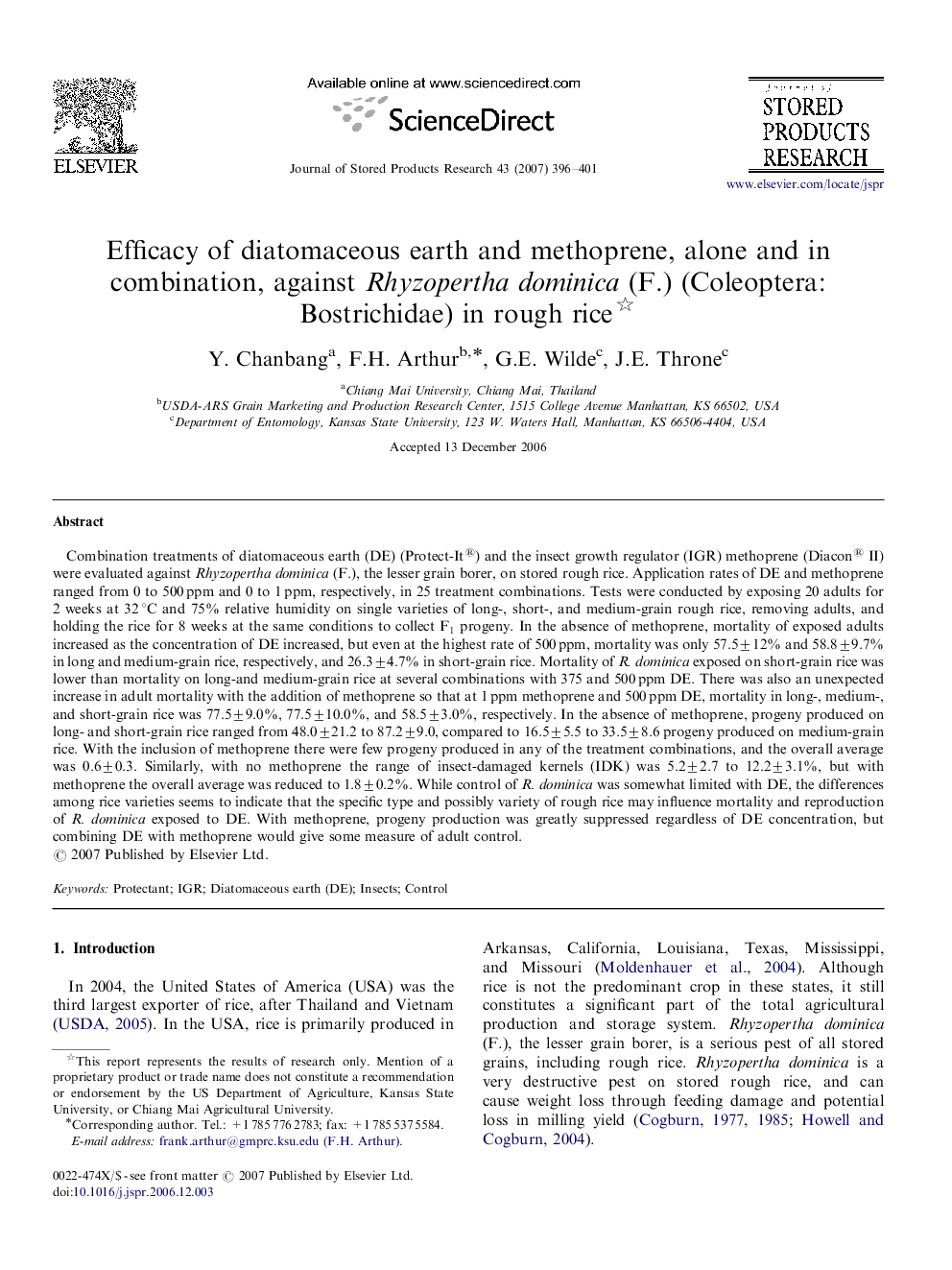| Article ID | Journal | Published Year | Pages | File Type |
|---|---|---|---|---|
| 4517421 | Journal of Stored Products Research | 2007 | 6 Pages |
Combination treatments of diatomaceous earth (DE) (Protect-It®) and the insect growth regulator (IGR) methoprene (Diacon® II) were evaluated against Rhyzopertha dominica (F.), the lesser grain borer, on stored rough rice. Application rates of DE and methoprene ranged from 0 to 500 ppm and 0 to 1 ppm, respectively, in 25 treatment combinations. Tests were conducted by exposing 20 adults for 2 weeks at 32 °C and 75% relative humidity on single varieties of long-, short-, and medium-grain rough rice, removing adults, and holding the rice for 8 weeks at the same conditions to collect F1 progeny. In the absence of methoprene, mortality of exposed adults increased as the concentration of DE increased, but even at the highest rate of 500 ppm, mortality was only 57.5±12% and 58.8±9.7% in long and medium-grain rice, respectively, and 26.3±4.7% in short-grain rice. Mortality of R. dominica exposed on short-grain rice was lower than mortality on long-and medium-grain rice at several combinations with 375 and 500 ppm DE. There was also an unexpected increase in adult mortality with the addition of methoprene so that at 1 ppm methoprene and 500 ppm DE, mortality in long-, medium-, and short-grain rice was 77.5±9.0%, 77.5±10.0%, and 58.5±3.0%, respectively. In the absence of methoprene, progeny produced on long- and short-grain rice ranged from 48.0±21.2 to 87.2±9.0, compared to 16.5±5.5 to 33.5±8.6 progeny produced on medium-grain rice. With the inclusion of methoprene there were few progeny produced in any of the treatment combinations, and the overall average was 0.6±0.3. Similarly, with no methoprene the range of insect-damaged kernels (IDK) was 5.2±2.7 to 12.2±3.1%, but with methoprene the overall average was reduced to 1.8±0.2%. While control of R. dominica was somewhat limited with DE, the differences among rice varieties seems to indicate that the specific type and possibly variety of rough rice may influence mortality and reproduction of R. dominica exposed to DE. With methoprene, progeny production was greatly suppressed regardless of DE concentration, but combining DE with methoprene would give some measure of adult control.
